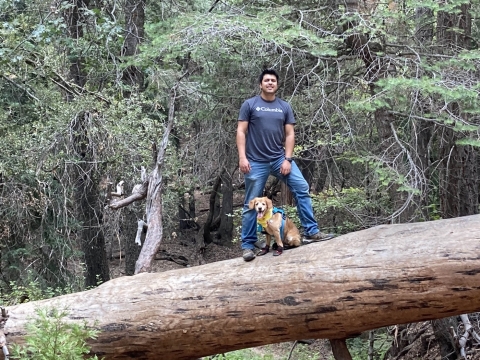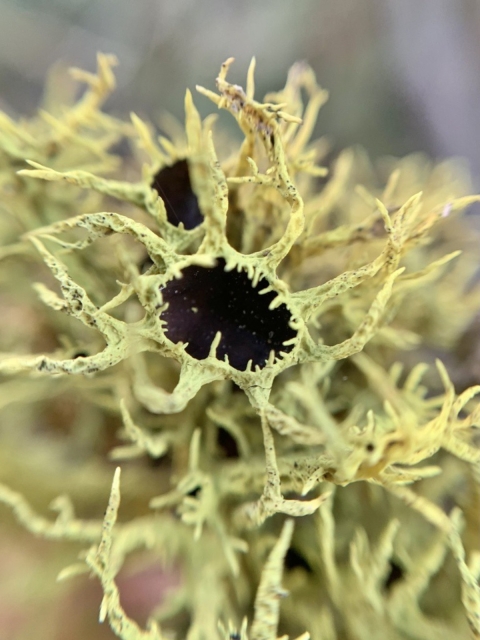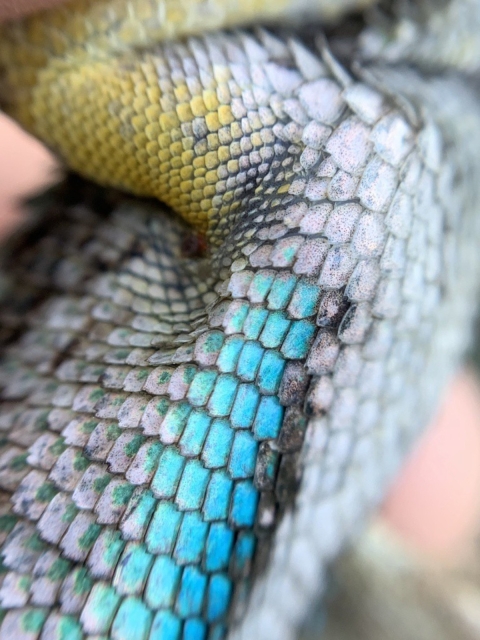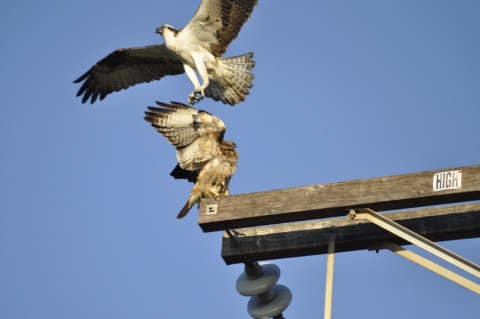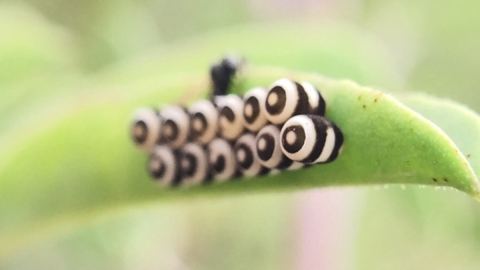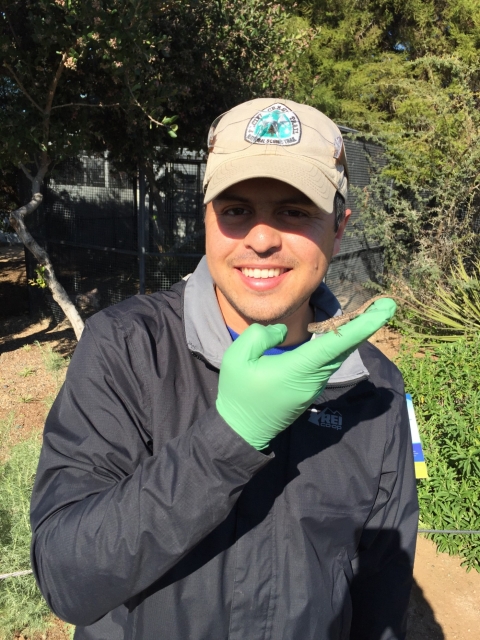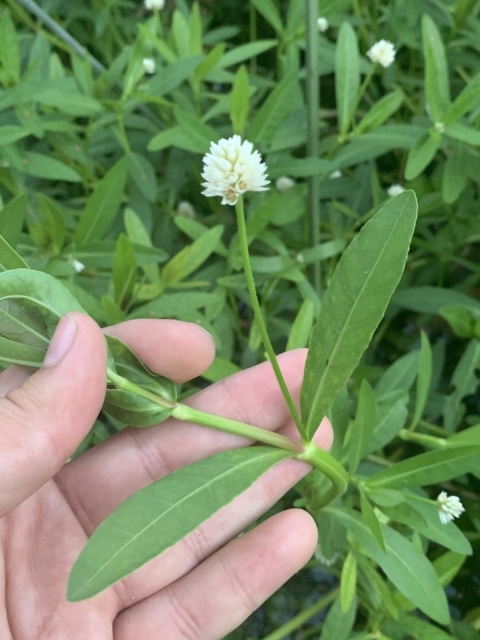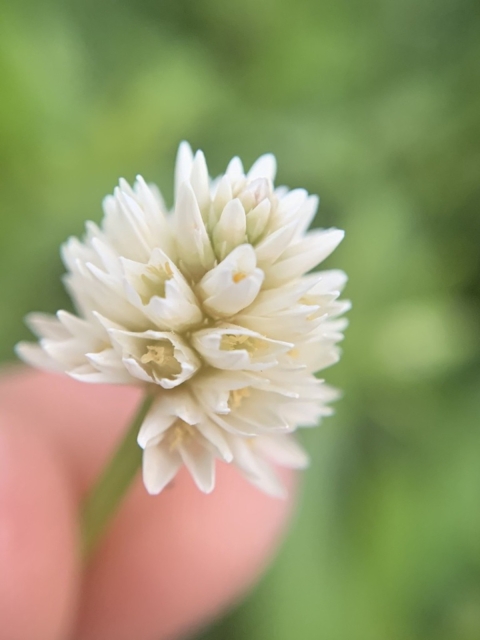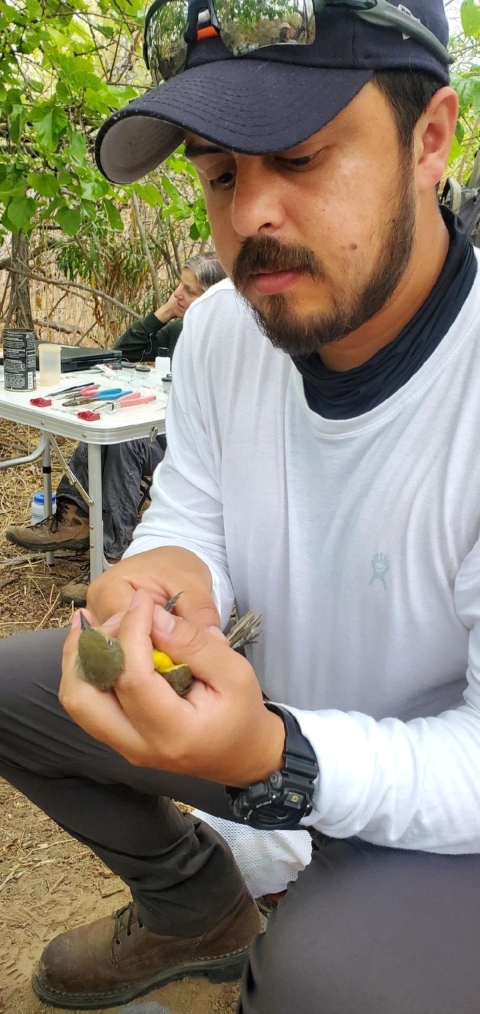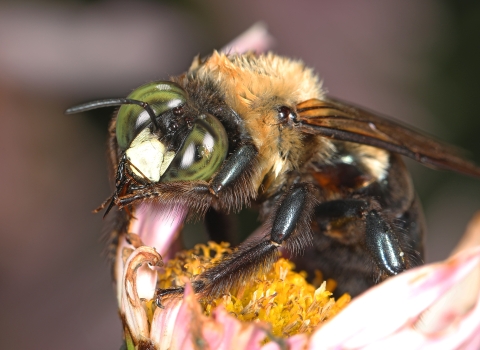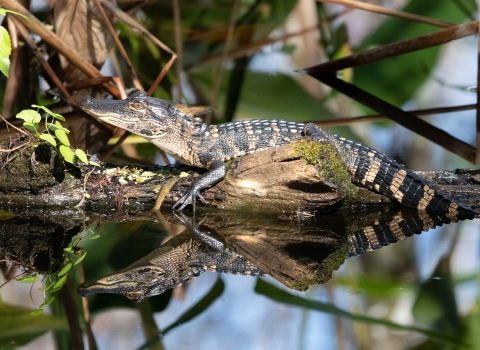As the sun rises early in the morning, the fog fades away to reveal the secrets of the estuary. The fiddler crabs dance in unison before the next high tide, a peregrine falcon is in hot pursuit of breakfast, and all around, the initial silence is broken by birds of all types of feathers. Despite growing up near the Tijuana Estuary, for Jorge Ayón, some of these sights and sounds were not always obvious.
Although Ayón lived in Tijuana, Mexico, up to the age of 5, he was born and raised in Chula Vista, California. He graduated from Chula Vista High School and pursued higher education at Grossmont College. Even though he was an engineering major, a degree that would make his family very proud, he wasn’t sure if that was something he wanted to do. Ayón continued with his studies and would go hiking with friends during his time off.
“I was into hiking more or less because it was trendy,” recalled Ayón. “If you are from San Diego and part of a certain age group, that’s what your friends go out to do.”
It wasn’t until he found a pair of binoculars while helping his mom spring clean that he would find a bigger purpose in the outdoors.
“I started seeing a lot of cool things and when I was back home, I would wonder what I could find next,” said Ayón. “It became like a scavenger hunt, and I was just out there to have fun. Eventually I wanted to learn how to distinguish one thing from another, and that’s when I picked up my first field guide for our region. It was 150 pages! I didn’t know we had these many birds.”
With binoculars in hand, Ayón started seeing his surroundings differently. He also started recognizing street and highway signs that pointed to wildlife viewing areas.
One sign in particular caught his attention.
“Before, I never gave it a second thought,” said Ayón recalling what led him to visit the Tijuana Estuary Visitor Center for the first time. “Millions of people drive by those signs and never even think about it. I didn’t know this place existed. The word ‘estuary’ didn’t even register in my mind before.”
Ayón visited the estuary so often that the park rangers began noticing him. He was invited by staff to join what would be his first official guided bird walk with Robin Echols-Booth, the volunteer coordinator for Tijuana Estuary. Even though it wasn’t the best day for birding, Ayón was impressed after learning about all the other plants and animals that live in the estuary.
“There’s so much out here,” he said. “To the untrained eye, you may see just another lot waiting to be developed, but you don’t have to look that hard. You just need to look close enough to see that there’s variety, diversity and all these things hiding in plain sight.”
Ayón was spending a lot of time as a naturalist in nature but still saw this as a hobby. He continued his engineering studies while working on getting his Emergency Medical Technician certification. During his short breaks and lunch time, he would read a bird guide and spend time in the parking lot searching for birds with his girlfriend, Jazzel. After class, he would continue birding. Once he achieved his certification, he soon realized he needed to drastically change his career path so that his major matched his interests and decided to pursue a career in biology.
While pursuing a biology degree, Ayón decided to pay for his schooling via the gig economy. He knew he didn’t want to work a desk job and wanted to find a temporary job that kept him on the move. Amazon was hiring delivery drivers and within a week of applying, he was already making the rounds throughout every neighborhood in San Diego. It afforded him flexible work hours for the low cost of exhausting back breaking work. His job as an Amazon delivery driver also helped him explore areas that are commonly not open to the public.
“My route took me all the way to Fallbrook,” he said. “I got to look at all these really cool landscapes on these private properties. I would take my binoculars and camera, and I would go birding next to these million-dollar homes looking at hillsides — that was really cool.”
Despite his enthusiasm for being outdoors and observing plants and wildlife, his mother did not share this sentiment.
“I would tell my mom what I would do as a hobby, but she would make fun of me,” said Ayón. “It is something that is not taken seriously, and people view it as a waste of time, especially in our culture, especially our culture here, because we’re here to work — to make a name for ourselves.”
Instead of holding him back from following his dreams, the comments motivated Ayón who saw this as a challenge to prove to people that what he was doing was important. This pushed him to continue to get more involved in the outdoors.
In the middle of his 2019 spring semester, three years after he began birding, he accepted an invitation from Tijuana Estuary to volunteer as one of their bird guides and lead walks once a month. After attending training, he led his first walk of six people.
“I was so nervous and my knees were shaking, but I was able to get through it,” he said. “Although I have some social anxiety, being outside is freeing, and that helped me get through it.”
Ayón continued to lead walks of varying sizes. Sometimes no one would show up, but that didn’t stop him. iNaturalist, a social network-like platform to submit flora and fauna observations, helped him discover even more — not just birds, which were his main focus, but other forms of wildlife. He also started to become aware of finer details, like behavior, seasons, and how weather can affect different species.
“My home library grew from a few books to a substantial collection,” he said. “I became obsessed with knowledge and wanted to learn specifically about the plants and animals in our region. It stopped becoming a hobby when I was waking up at 4 a.m. to go to Otay mountains to look for a specific bird — it became my lifestyle.”
Ayón continued to immerse himself in the outdoors whenever and wherever he could. He accepted an internship at the Living Coast Discovery Center, which started January 2020 and lasted until March when COVID halted everything. It was around this time when he first heard about the Hispanic Access Foundation internship. Even though he felt that there were better candidates, he told himself that it would be difficult to find a candidate that knows the Chula Vista and surrounding area more intimately than he did.
“I had a lot of things lined up, but the internship was the ‘big one,’” he said. “I was so excited to share with my mom that I had accepted the internship offer and show her all the things that I was involved in so she could see that it was possible to get paid for what I loved doing.”
Due to the pandemic, Ayón’s internship was delayed a year. It was a long year of waiting, but he kept busy learning through iNaturalist and crowdsourcing.
Even in his downtime, Ayón was using his passions to make a difference to the outdoors.
In September 2020, Ayón discovered what would be the first documented record of alligator weed (Alternanthera philoxeroides), an invasive species invasive species
An invasive species is any plant or animal that has spread or been introduced into a new area where they are, or could, cause harm to the environment, economy, or human, animal, or plant health. Their unwelcome presence can destroy ecosystems and cost millions of dollars.
Learn more about invasive species , in San Diego County. After uploading his finding to iNaturalist, he was contacted by Jon Rebman, a botany curator from the San Diego Natural History Museum who alerted him of his discovery. This unwelcome invasive plant caused such a stir that even The San Diego Union Tribune wrote a story about the finding.
“Even prior to the internship I had noticed that there wasn’t a presence for us in the places that I had been,” said Ayón. “There wasn’t really anyone that looked like us, that talked like us. I thought I should do something about it.”
Once he got the opportunity as a Hispanic Access Foundation intern with San Diego Refuges, he saw this as a new platform with a larger reach where he can interpret information and make it relatable to the local communities to help improve their connection to nature and the outdoors.
“I wish there was more information in Spanish because we have a lot of rich history here,” he said. “This is something that we can improve on.”
In the long term, he wants to have a career in conservation in the Chula Vista area. For Ayón, there is always something new to discover, even if he has been here his entire life.
“When I went to the Salt Works [part of San Diego Bay NWR], I was tearing up,” he said. “It was really beautiful. I’ve been here all my life, and this was my first time looking at my city, my home, from this vantage point.”
Ayón’s life trajectory has not been linear. During that one fateful spring morning five years ago, he couldn’t have imagined that finding a pair of binoculars would change his life as much as it has. As time moves on, he has learned to trust that his efforts will lead him to what he is meant to do — although, he would really love to be a biologist for the U.S. Fish and Wildlife Service one day.
Written by Nancy Fernandez, park ranger and Jorge Ayón, visitor services and urban outreach intern, San Diego National Wildlife Refuge Complex.
